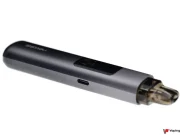Study author Charles Gardner revealed that 2,159 US respondents aged between 18 and 34, were polled as part of the study and 33% of them would switch back to smoking if flavours were unavailable.
To this effect, concluded the researchers, flavour restrictions may be detrimental rather than beneficial. “Moreover, if vape product sales were restricted to tobacco flavors, 39.1 percent of users reported being likely to continue using e-cigarettes but 33.2 percent were likely to switch to cigarettes. If vape product sales were entirely restricted, e-cigarette users were equally likely to switch to cigarettes,” said the study.
Real life data
Supporting these findings, is another recent study published in JAMA Pediatrics, which found that following San Francisco’s flavour ban, teenagers in the city’s high schools were more likely to take up smoking than teenagers in US school districts where no flavour bans were imposed. While prior to the ban, smoking rates in San Francisco were similar to that of many cities across the country.
“To understand this conceptually, think about youth preferences between tobacco products,” said study author Abigail Friedman, an assistant professor in the Department of Health Policy and Management at the Yale School of Public Health, in a statement. “Among youths who vape, some likely prefer ENDS to combustible products because of the flavors.”
“For these individuals as well as would-be vapers with similar preferences, banning flavors may remove their primary motivation for choosing vaping over smoking,” she continued. “Thus, some of them will respond to a ban on flavors by choosing to use combustible products instead of ENDS.”




![Recent Conference Urged Nations Worldwide to “Quit [Smoking] Like Sweden”](https://www.vapingpost.com/wp-content/uploads/2024/04/vape-conference-238x178.png)




![Recent Conference Urged Nations Worldwide to “Quit [Smoking] Like Sweden”](https://www.vapingpost.com/wp-content/uploads/2024/04/vape-conference-180x135.png)


